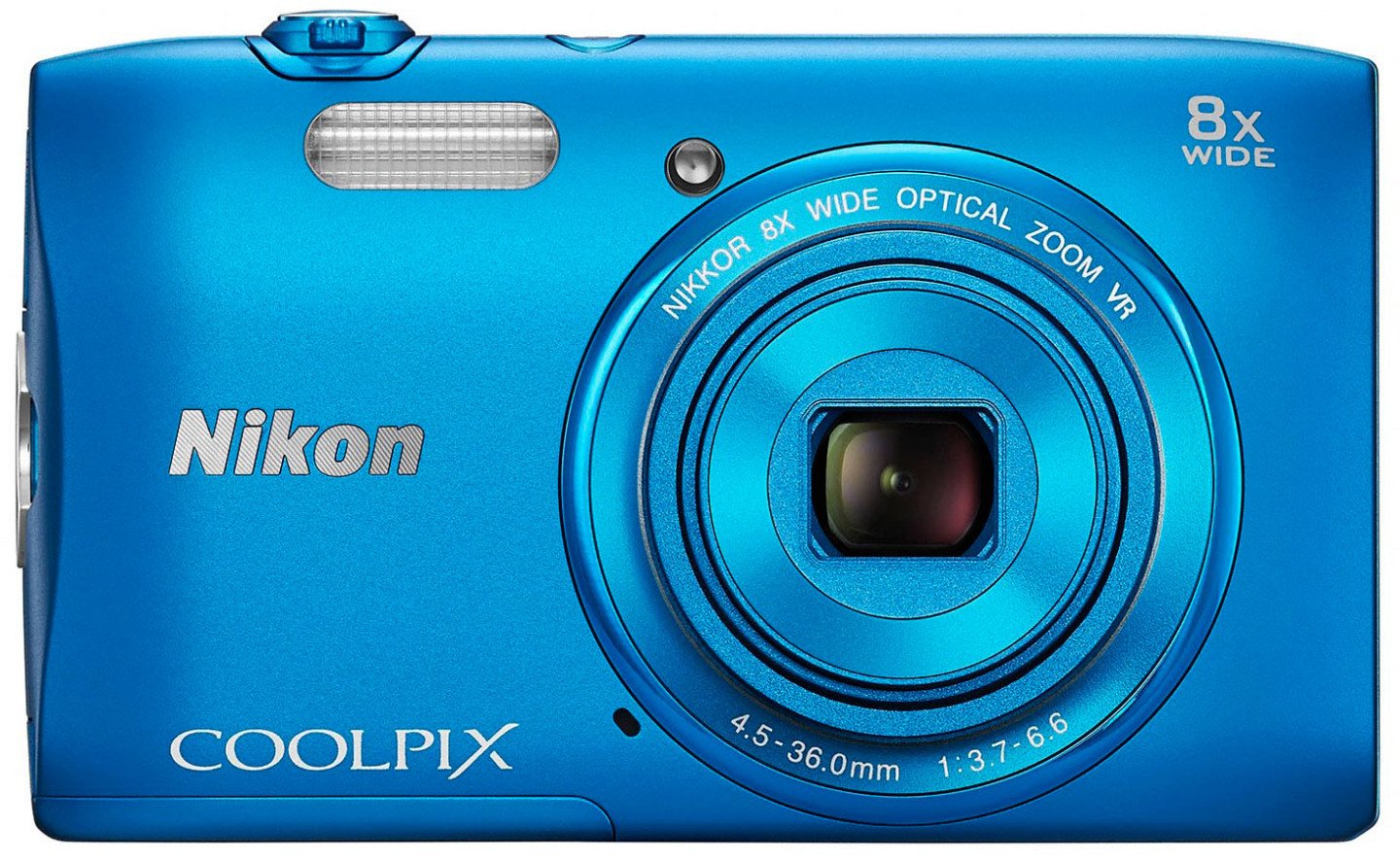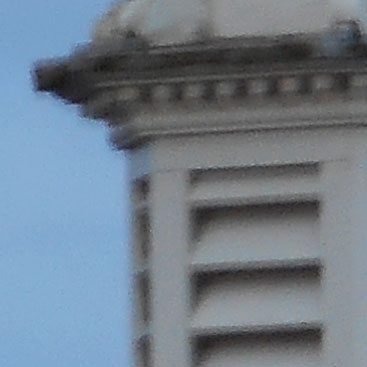Nikon COOLPIX S3600 review
-
-
Written by Ken McMahon
Intro
The Nikon COOLPIX S3600 is a point-and-shoot compact with an 8x optical zoom and 20.1 Megapixel CCD sensor. Released in February 2014 it supersedes the COOLPIX S3500 extending the earlier model’s 7x zoom to 8x with a 35mm equivalent range of 25-200mm. Most of the other specifications remain the same with a 2.7 inch LCD screen, built-in flash, Auto and Scene Auto detect exposure modes and 720p HD video recording with mono audio.
The COOLPIX S3600 adds Nikon’s Target finding AF mode which identifies and focuses on the main subject in the frame. It also supports optical stabilisation with digital correction for movie shooting. And for effects fans there’s a raft of in-camera filters which can be applied at the time of capture, immediately afterwards, or later when reviewing images.
The COOLPIX S3600 offers a longer zoom and a little more sophistication than a budget point-and-shoot compact and, though more expensive, is still pretty competitively priced. In my review I’ve compared it with Sony’s Cyber-shot W830, another model that offers a longer zoom for a little more than you’d pay for a point-and-shoot with a 4, 5 or even 6x zoom. Read my full review to discover which of these two models offers the best value for money one flight up from the bargain basement.
Nikon COOLPIX S3600 design and controls
The COOLPIX S3600 is small and subtly curvy. It looks good and feels good, both when you’re carrying it around in the palm of your hand as well as when taking pictures. The front panel curves softly into the top edge and the four corners melt away like soft butter. I actually wanted to hold it in my hand rather than stick it in my pocket simply because I loved the way it felt. It’s easy to underestimate the power of design, but it’s what makes Apple products so desirable and Nikon has managed to capture a little of that magic with the shape of the COOLPIX S3600.
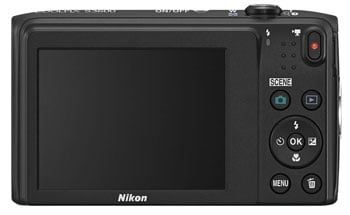 |
The top panel is itself a curved, rather than flat surface with the on/off button flush mounted about half way along. The LED ring light surrounding it tells you when the camera is on and flashes to indicate it’s about to enter power-saving mode. A little further along towards the right end is the large round shutter button with zoom collar surround.
Moving on to the back panel; the movie record button is located on the right edge where you can easily reach it by sliding your thumb right of the dimpled plastic thumb rest. It’s a lozenge-shaped button that sits in a raised detent, providing a little bit of resistance to stop your thumb sliding off the right edge of the camera.
The rear panel controls consist of four buttons and a four-way control pad which Nikon calls a Multi selector because it’s used for menu navigation and to access the features on the four cardinal points – flash mode, exposure compensation, macro mode and self-timer. A button above it labelled with a green camera icon sets the shooting mode and alongside it is a button for playback of photos and movies. Below the Multi selector are menu and delete buttons.
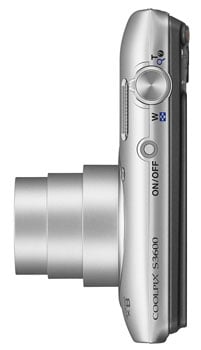 |
To the left of these controls the 2.7 inch LCD is inset in a panel that’s clearly meant to accommodate a larger 3 inch screen, an unfortunate visual hint at what you’re missing out on every time you look at it. Using the same form factor for models with different sized screens keeps the cost down, which is no bad thing, but it’s hard all the same to look at all that wasted space without thinking how much better the COOLPIX S3600 would be with a 3 inch screen.
Be that as it may, the 2.7 inch 230k dot panel actually provides a pretty decent view. It has a reasonably wide angle of view horizontally, though if you hold the camera above your head the image goes quite dark once you get past about 30 degrees. The 2.7 inch 230k dot screen on the Sony W830 has a similarly limited vertical viewing angle, but in general use I found the brighter, more contrasty COOLPIX S3600 screen was a little easier to get on with.
On the bottom of the COOLPIX S3600 the door that accesses the combined battery and card compartment is unusual in that it’s hinged on the long side at the back edge of the camera body; slide it forward and it springs open. It’s a more robust design and an improvement on the usual arrangement.
The COOLPIX S3600’s built-in flash is on the front panel just below the shutter button which keeps it well out of the way of stray fingers. It has a maximum quoted distance of 3.5 meters which in all probability is at 1600 ISO. At a less noisy 100 ISO that reduces to a little shy of one metre or about three feet. It works well for reasonably close subjects and fill-in and has a Red-eye reduction as well as a slow sync mode.
A small flap on the right side of the camera body covers the combined USB and A/V port. This is used to connect the COOLPIX S3600 to a computer to transfer photos and movies, to connect to a TV (with an optional cable) and to charge the camera either using the supplied charger or by plugging it into a laptop or other suitable power source. The COOLPIX S3600 takes the same EN-EL19 slim Lithium Ion battery as its predecessor and manages to squeeze 230 shots form it – 10 more than before and also 10 more than the Sony W8300.
Nikon COOLPIX S3600 lens and stabilisation
The COOLPIX S3600 has an 8x optical zoom with an equivalent range of 25 to 200mm. A 25mm wide angle encompasses a very wide field of view and though it’s not unusual on a compact point-and-shoot these days (the Cyber-shot 8300 has the same 25-200 range) it’s easy to forget that only a couple of years ago 27 or 28mm was the norm. 25mm is a very useful wide angle view that will take in panoramic landscapes, tiny interiors and big group shots with no trouble. At the other end of the range its 200mm telephoto is long enough for sports and wildlife where you can get reasonably close to the action, say at a school netball match, or the zoo, but if you’ve got a safari planned you’ll need to extend the range, as well as the budget, into the compact super-zoom category.
COOLPIX S3600 coverage wide | COOLPIX S3600 coverage tele | |
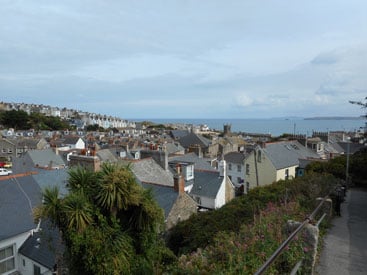 |  | |
| 4.5-36mm at 4.5mm (25mm equiv) | 4.5-36mm at 36mm (200mm equiv) |
The maximum aperture is f3.7 closing to f6.6 at the telephoto end of the zoom range. It’s not especially bright and other than in bright conditions, you’ll likely have to shoot at higher ISO settings to get sharp shots at the telephoto end of the range. That said, the Cyber-shot W830’s lens is only marginally brighter at f3.3-6.3. Plus, the COOLPIX S3600 is equipped with optical image stabilisation to help you avoid camera shake at slower shutter speeds.
Stabilisation on the COOLPIX S3600 is called Photo VR and set from the Setup menu. Stabilisation for movies is configured separately on the movie menu. There are two options, On or Off, which can be set in any shooting mode – even using Scene Auto selector mode you need to manually set the stabilisation, the COOLPIX S3600 isn’t smart enough to make the decision whether or not stabilisation is necessary on your behalf.
To test the Photo VR stabilisation on the COOLPIX S3600 I set Auto mode and took a series of shots in fading light at progressively slower shutter speeds with the lens zoomed to its maximum 200mm equivalent zoom range.
As you can see from the 100 percent crops below, the COOLPIX S3600 can be hand-held at shutter speeds as slow as 1/5th – an impressive 5 stops slower than conventional wisdom says is advisable without stabilisation. If you take a close look at the crop on the right below, however, you’ll notice it is a little soft, for really sharp results 1/10th would be a safer bet. That said, four stops of stabilisation is still an excellent result.
The COOLPIX S3600 also features Motion detection, which sets a higher ISO sensitivity when motion is detected in the frame, so you get double protection against blurry photos – VR for camera shake and Motion detection for subject blur.
Nikon COOLPIX S3600 VR (Off / On) | ||||
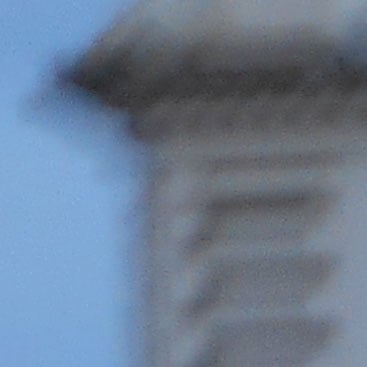 | ||||
100% crop, 4.5-36mm at 36mm, 80 ISO, 1/5th, VR Off. | 100% crop, 4.5-36mm at 36mm, 80 ISO, 1/5th, VR On. | |||
Nikon COOLPIX S3600 shooting modes
Shooting modes are selected on the COOLPIX S3600 by pressing the shooting mode button labelled with a green camera icon on the rear panel. When you do this, a menu with five options appears on the right edge of the screen. The first of these is Scene auto selector, a Scene detect auto mode which chooses one of ten scene modes depending on the subject. Scene auto selector includes two portrait modes, two night portrait modes, two backlighting modes, landscape, night landscape, close up and a catch-all ‘other’ mode.
Right at the bottom of the shooting modes menu is Auto mode, better known on most compacts as Program auto. This one provides as much control over the COOLPIX S3600 as it’s possible to get. Exposure is set automatically, but unlike Scene auto select, there’s no scene detection involved. In Auto mode you can set the ISO sensitivity, white balance, and colour option (choose from standard, vivid, black and white, sepia and cyanotype). You can also adjust exposure compensation and opt for one of two self-timer modes.
The shooting menu also offers something called Quick effects. With this activated you can apply effects filters to a shot just after you’ve taken it. Effects include Pop, Super vivid, Painting, Photo illustration, High key, Toy camera effect, Cross process, fish-eye, miniature and selective colour. To apply the effect you press the OK button in the centre of the Multi selector while the image preview is on the screen, but in fact you can apply the effects an any time by pressing the OK button when previewing images in playback mode. The filtered version is saved along with the original.
If you’re sure you want to apply an effect to a shot, rather than waiting until afterwards, you can select from one of twelve special effects modes. Oddly, these aren’t the same as the Quick effects, though they do include some of them. Among those not included are Photo illustration, cross screen, cyanotype and miniature. The good news is that you can use the special effects while recording movies, the bad news? Quick effects can’t be applied to movies, so no miniature effect for movie clips. The table below shows three of the effects modes applied at the time of shooting on the top row (L-R High contrast mono, Selective colour and Cross process) and on the bottom row three Quick effects applied after shooting in playback mode (L-R Photo illustration, Fish-eye and Cyanotype).
If Scene auto select is a little too much automation for you, you can manually select scene modes from the shooting menu. There are 18 scene modes including all the usual suspects like portrait, landscape, sports and pet mode as well as a museum mode for discrete shooting. But no proper panorama mode, just Panorama assist, which provides an overlay for lining up overlapping shots, but doesn’t stitch them. You need to do that yourself using the supplied Panorama Assist application. This is one area where the Sony Cyber-shot W830 with its excellent Sweep panorama mode has a clear advantage.
Finally, there’s Smart portrait mode which automatically releases the shutter when the COOLPIX S3600 spots a grin somewhere within the frame.
 | 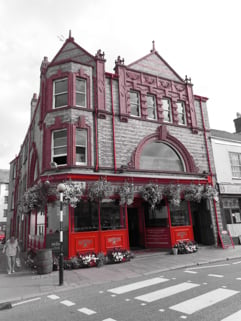 | 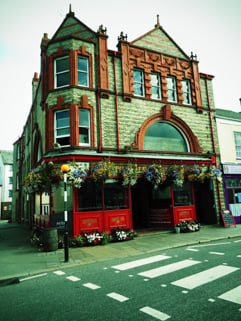 |
 |  |  |
Nikon COOLPIX S3600 movie modes
The COOLPIX S3600 has a best quality 720p HD video mode. Frame rates are set according to whether NTSC or PAL video mode is selected in the Setup menu. In NTSC mode the rates are 30fps and for PAL 25fps. This doesn’t provide much of an advantage for users who’ll most likely be viewing on a computer of other digital device, but it saves Nikon having to produce two different models for NTSC and PAL regions. As well as 720p25/30 there are 480p25/30 and 240p25/30 modes.
All movies are encoded using the rather dated Motion JPEG codec and saved as .avi files in the same folder as photos. The ageing Motion JPEG codec isn’t particularly efficient by modern standards. This means that the movie quality isn’t as good as it would be for similar sized files using a more efficient codec like the now ubiquitous H.264 which incidentally is used on the Sony W830. It also means that movie files are comparatively large. The COOLPIX S3600 encodes 720p video at around 26Mbits/s which means a minute of footage takes around 180MB of card space or to put it another way you’ll get around 22 minutes of footage on a 4GB card. The maximum single clip recording time is 29minutes or 2GB, whichever is reached first, so in effect you’re limited to around 11 minutes in 720p HD mode. Nikon recommends a Speed Class 6 SD card for recording movies.
You can use the COOLPIX S3600’s optical zoom during movie recording, but even when the digital zoom is disabled from the setup menu it continues to function during movie shooting. This is more of a problem than you might imagine. Using the digital zoom results in a visible loss of image quality, so you usually want to avoid it. Unlike when shooting stills there’s no indicator on the screen to tell you when you’ve come to the end of the optical zoom range and started on the digital zoom. The only clue is the short stepping motion of the digital zoom – another reason to avoid it for movie shooting. It takes precise judgement and quite a bit of practice to stop zooming at just the right moment, and the only way to be sure of avoiding digital upscaling of your movie footage is to stop just short of the full 200mm optical zoom range. This kind of guesswork is stressful and completely unnecessary, effectively it means you’re probably better off avoiding the zoom if you can during recording.
| |
|---|---|
| |
| |
| |
|---|---|
| |
| |
| |
|---|---|
| |
| |
| |
|---|---|
| |
| |
Nikon COOLPIX S3600 handling
The COOLPIX S3600 starts up pretty swiftly and is ready to shoot in around two seconds. The zoom motor is a little buzzy, but covers the 8x range swiftly in just a couple of seconds. It also provides a good degree of fine control, I was able to nudge it through sixteen increments which was significantly better control than the zoom rocker on the Cyber-shot W830 provided.
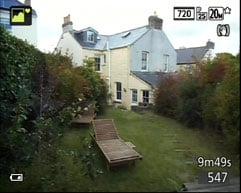 | 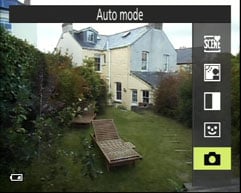 | 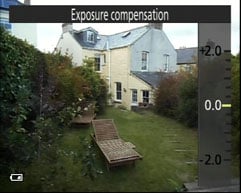 |
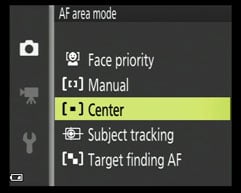 | 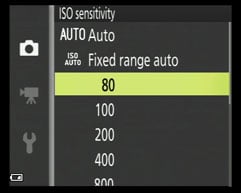 | 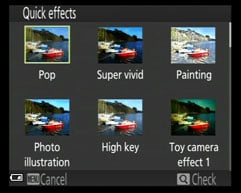 |
Shooting mode, flash mode, photo and movie quality, stabilisation, battery life, ISO sensitivity, and remaining card capacity for photos and movie footage are all displayed along the top and bottom edges of the screen. These disappear after a few seconds to provide an uncluttered view and re-appear following a half-press of the shutter button. And when the shutter is held down in Auto mode the info is replaced with just the aperture and shutter speed info. It’s a well thought out system that on the whole tells you just what you need to know when you need to know it. But if you don’t like the way it works, you can change it to display all the time or not at all. There are also options for a grid and 16:9 HD movie overlay from the Setup menu.
The COOLPIX S3600 has no fewer than five AF area modes, more than is usual for a camera in this class and enough to cope with nearly any situation, though, as you’d expect, there’s no manual focus option. Face priority works well when people are within a few metres of the camera in good light. If there are no faces in the frame it defaults to the nine-area AF system which it uses to focus on the subject closest to the camera. Alternatively you can manually select the focus area from one of 99 positions using the multi-selector to move the frame around a 9×11 grid, or set a central focus point.
The COOLPIX S3600 includes the target finding AF feature introduced on the COOLPIX S8200 back in 2011. This identifies both human and non-human subjects in the frame when the camera is pointed at a scene. Potential subjects are identified and tracked with green rectangles. If you’re shooting people, face recognition is probably a better choice of AF modes, but target finding does seem to have an uncanny knack for picking the main subject in a scene which for some situations is a real improvement on the nine-area AF mode.
Continuous shooting at full resolution isn’t one of the COOLPIX S3600’s strengths, though like all Nikon compacts it sort of makes up for it with a couple of reduced resolution and feature continuous modes, Nikon’s Best Shot selector and Multi-shot 16. These respectively shoot multiple images and choose the best one and create a 4×4 grid from a continuous sequence.
The COOLPIX S3600 has a 20.1 Megapixel CCD sensor which produces images with a maximum size of 5152 x 3864 pixels at one of two JPEG compression settings. Best quality 20 Megapixel images are around 8 to 10MB in size. The sensitivity range is 80 to 3200 ISO and the shutter speed range in Auto mode is 1s – 1/1500 with a four second maximum in Fireworks show scene mode.
To see how the quality of the COOLPIX S3600 measures-up in practice, take a look at my Nikon S3600 quality and Nikon S3600 noise results pages, browse my Nikon S3600 sample images, or skip to the chase and head straight for my verdict.
